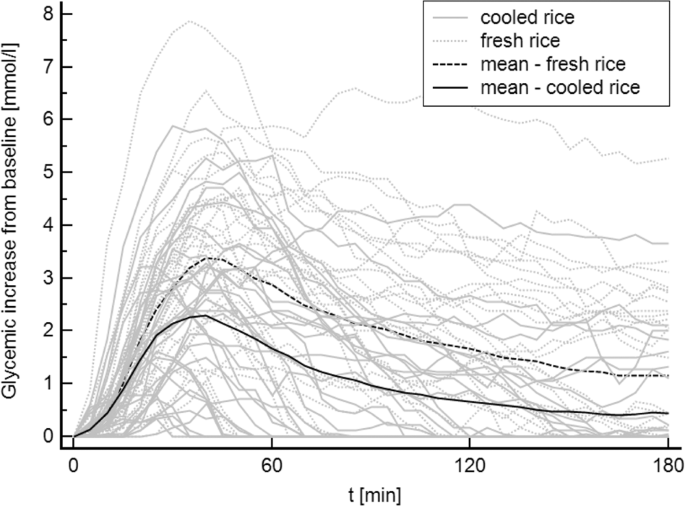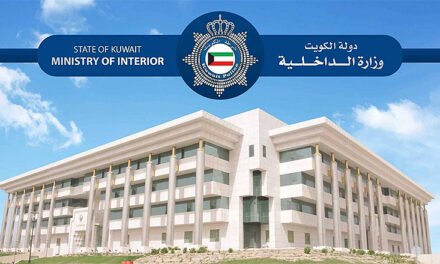Abstract
Introduction
Carbohydrates are one of the macronutrients which have the most substantial influence on glycemic response. The cooling of rice after cooking causes retrogradation of starch, which becomes a non-absorbable product in the human digestive tract.
Aim of the study
This study aimed to assess whether cooling of rice affects postprandial glycemia in subjects with type 1 diabetes.
Materials and methods
The study included 32 patients with type 1 diabetes. Each participant of the study consumed two standardized test meals consisting of long-grain white rice. One of the test meals was served immediately after preparation, and another was cooled for 24 h at 4 °C after preparation and reheated before being served. Postprandial glycemia was measured for 3 h using the FreeStyle Libre flash glucose monitoring system for each patient.
Results
After consumption of the test meal containing rice subjected to the cooling process when compared to fresh rice, a significantly lower value of maximum glycemia (11 vs. 9.9 mmol/L, p = 0.0056), maximum glycemic increase (2.7 vs. 3.9 mmol/L, p < 0.0001), areas under the glycemic curve (135 vs. 336 mmol/L * 180 min, p < 0.0001) and significantly shorter time to peak (35 vs. 45 min, p = 0.031) was observed. There was a significantly higher number of hypoglycemic episodes among the patients after consuming test meals with cooled rice compared to fresh ones during 180 min of observation (12(38) vs. 3(9), p = 0.0039).
Conclusions
Consumption of rice subjected to the cooling process results in a lower increase of postprandial blood glucose in subjects with type 1 diabetes. At the same time it increases the risk of postprandial hypoglycemia using a standard insulin dose.







